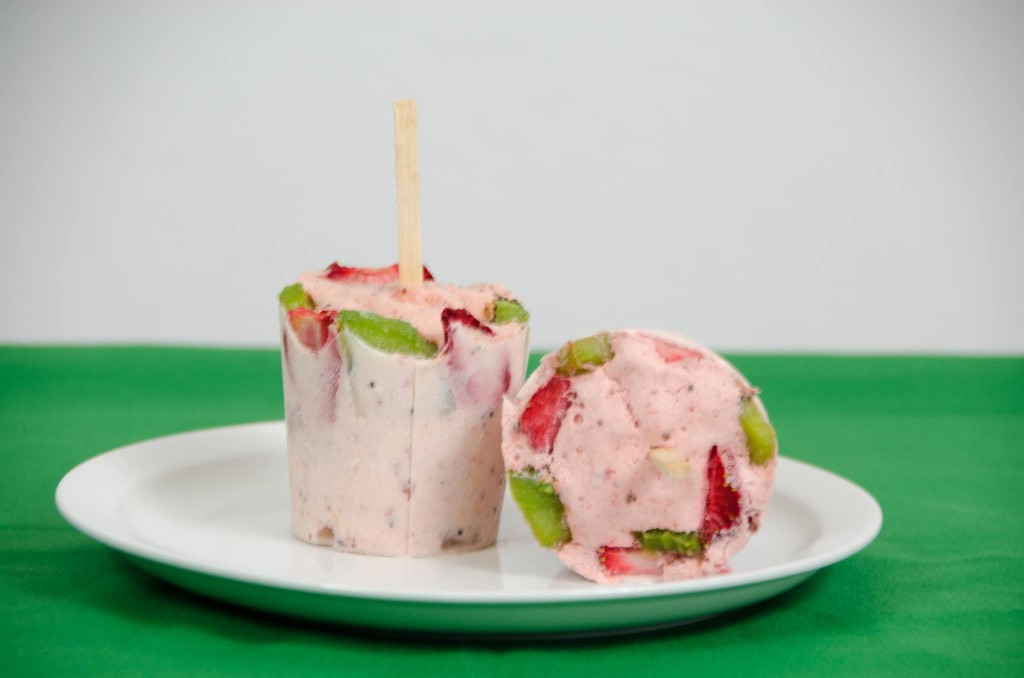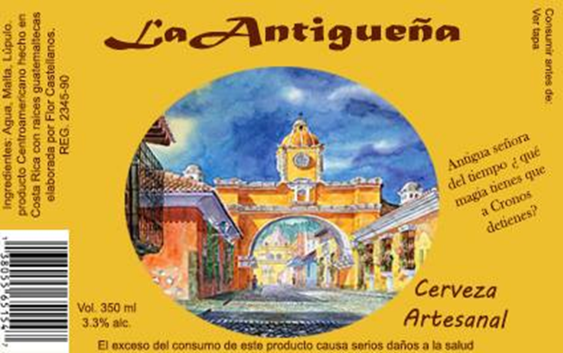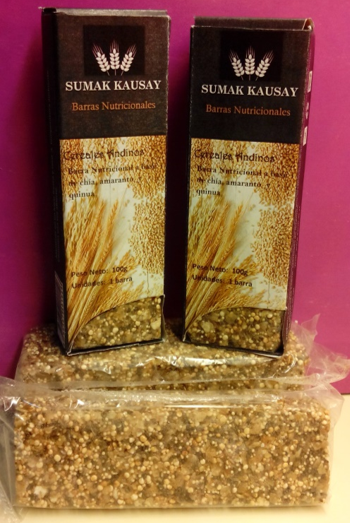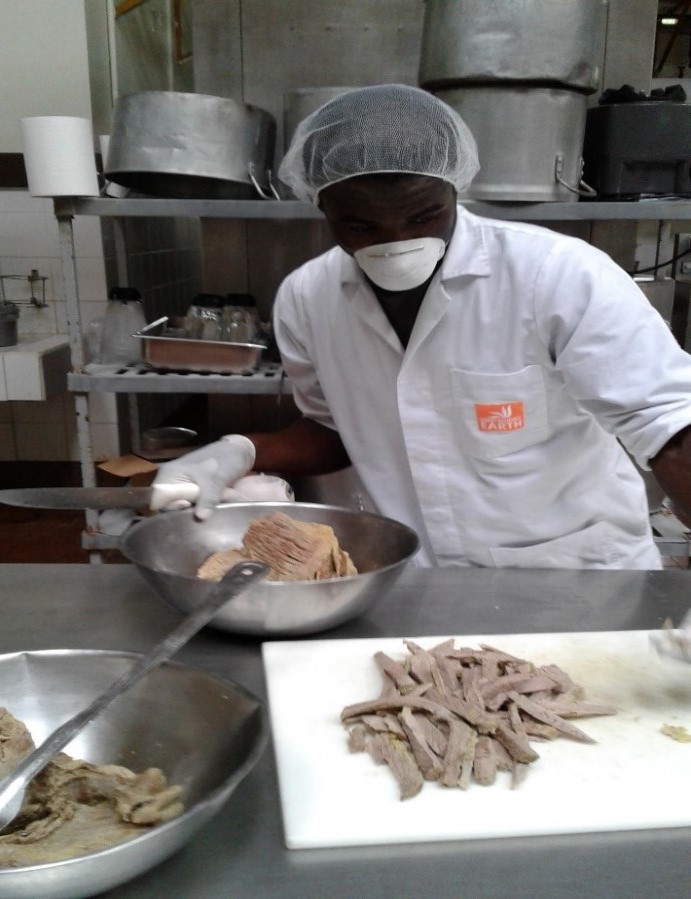Eating Outside the Box
As part of EARTH’s academic program, all third year students participate in a Food Processing course led by Yanine Chan. In this course, each student must develop a product from scratch, including its design, market research, brand design, financial tests, and sensory surveys. Above all, students learn how to add value to their products.
Added value is, “Value-added describes the enhancement a company gives its product or service before offering the product to customers. Value-added applies to instances where a firm takes a product that may be considered a homogeneous product, with few differences (if any) from that of a competitor, and provides potential customers with a feature or add-on that gives it a greater sense of value.”
This means that students must think not only about the product, but also how they can differentiate proposals from their peers.
Join us in learning about four exceptional ideas that stood out for their innovative and community-oriented approach.
We all scream for Ice cream
César Alifonzo (’16, Dominican Republic)
Healthy and Fresh
César Alifonzo is passionate about ice cream. When he began the Food Processing class, he knew that this was his chance to learn how to make it, but he didn’t know that it would eventually become his vocation.
‘Healthy and Fresh’ is a premium ice cream made from strawberry, kiwi, and aloe vera. César chose these ingredients for the healthy properties of aloe, the acidity of kiwi, and popular taste of strawberry.
“I picked aloe for its healthy properties. Many people don’t eat aloe because of its bitterness, smell, and color. I decided to mix it with kiwi to compensate for the flavor.”The result was 250 ice cream popsicles, each 250 grams with unique packaging: a container to save them for later and a special top that prevents melting or getting dirty. The product was distributed in the cafeteria to such wide enthusiasm that César realized his idea was a success and has the potential to be commercialized.
To create ice cream, you need a homogenizer, a pre-freezing machine, and a freezing chamber. All of this machinery creates a heavy initial cost but, according to César, your profits quickly exceed your expenses. Upon returning to Dominican Republic, César wants to include more fruit so that he can take advantage of wasted fruit and avoid waste, and he would also like to work with cheeses and jams.
“I have never been so passionate about something, and had no idea I would like it so much. I have found my future vocation in food production. More than anything, I have found an opportunity to innovate.”If you’d like to learn more about Healthy and Fresh, contact César Alifonzo at califonzo@earth.ac.cr.
Women power
Flor Castellanos (’16 Guatemala)
“La Antiqueña” Beer
In Guatemala, craft beer production has been growing in small steps over the past few years. Small businesses and beer festivals have begun to pop up, and it was in one of these festivals that Flor saw the great business opportunity to tap into this market.
I’ve always seen beer as a historical product that allows the producer to express artistry. I think making beer is not just mixing ingredients, but a process in which one must develop a personal touch to make a unique, special product. Currently, there are very few women who own their own brewery, and I want to change that. I want to be a pioneer.”In the Food Processing course, Flor developed “La Antiqueña,” a beer brand with two types: one based in passion fruit and the other in tangerine. The objective of the project was to cater to the tastes of women, who generally prefer a less bitter, more refreshing beer mixed with fruit acidity.
The product was quite successful and the people who participated in the taste testing were very satisfied. With these results, Flor wants to take her beer to Guatemala and use, in addition to passion fruit and tangerine, seasonal fruits that would normally be discarded because of their lack of aesthetic appeal. According to her analysis, this would greatly help lower the costs of production and of course, help reduce food waste. To produce beer at home, she needs to have a controlled, highly hygienic laboratory.
To learn more about “La Antiqueña” contact Flor at fcastellanos@earth.ac.cr
Say goodbye to soup
Laura Guatemal (‘17, Ecuador)
Sumak Kausay
In some South American countries like Peru, Bolivia and Ecuador, quinoa is a staple grain. Where Laura Guatemal is from in Ecuador, the product is generally used as a main ingredient in soup.
“In my area, quinoa, amaranth, and chia are basic grains, and not only in Ecuador but also in Peru and Bolivia. Producers usually only harvest what they use in soup, but that does not have any added value. My idea was to diversify and create another food other than soup. It was to take advantage of the raw material and make something that was at the same time nutritious and delicious.”In her research she found that consumers are looking for a product that is easily accessible to eat as a snack, but which must also be nutritious.
Laura always wanted to bring a valuable project to her home. She thought at first that she wanted to produce wine, but her region does not cultivate grapes, so she decided to continue with her idea of using and adding value to local products. That’s why she created bars. The long-term idea is to train the community in producing her snack bars and increasing the consumption of these grains, because children are not fans of eating the soup.
“In schools the government gives the students a cookie and glass of milk at snack time. I thought, why not change the cookie for a more nutritious quinoa bar? That way, the children become accustomed to eating the quinoa and amaranth in a newer, more appealing way than the traditional.”To develop the bars at home, Laura needs an industrial press machine. If you’d like to know more about Sumak Kausey, write Laura at lguatemal@earth.ac.cr
Feeding Haiti
Fridelyn Sylfard (Haití, ’16)
CAPIE
In Haiti, meat consumption is low, and since entering first year Fridelyn Sylfard has seen a way to increase this consumption. According to him, there are not many people who dedicate themselves to livestock production, and therefore his project is focusing on creating dried meat.
“All that I am working towards in the university, class projects, my graduation project, etc., have guided what I want to do in my life with animal production. It is not enough only to have animals and sell the meat. I must add value, and I learned in food processing class a way to do that by lengthening the life of the meat and offering a valuable product to consumers.”To produce dehydrated meat, you must first roast and then dry the meat in the oven. However, Fridelyn tested a method of cooking 90% and drying, taking into account how they mainly eat meat at home.
Fridelyn’s plan is to have his own farm with several types of animals and create jobs in his community, especially for small producers. “Although they will also have animals, I do not want them to be my competition. I want all of us to collectively increase production.”
Following this branch of animal production, he is basing his graduation project on reducing the costs of animal feed by using a concentrate of royal palm, which would make the price of meat more accessible.
“This course was very helpful. I learned the things I can implement for the benefit of many people and how to transform different products. I am thinking of using other resources we have in my country to add value to products. It is a new world of possibilities.”Contact Fridelyn for more information on his product at fsylfard@earth.ac.cr








